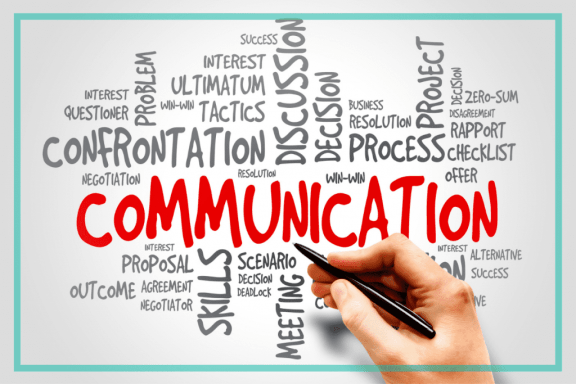
Effective communication is a crucial component of maintaining healthy relationships. When we communicate well with those around us, including family, friends, and coworkers, we can help strengthen our relationships and feel adequately supported.
However, low mood, anxiety, or anger, can disrupt our abilities to communicate and make us feel increasingly isolated from those around us. In these moments, it can be helpful to remind ourselves of the different ways we can communicate with each other and to practice strategies to increase the odds of being heard and understood by those around us.

What are the different styles of communication?
Generally, there are 3 different styles of communication: passive, assertive, and aggressive.
Passive
With passive communication, opinions, feelings and wants are withheld and go unexpressed. Passive communication often leads to increased feelings of loneliness or isolation.

Assertive
Assertive communication results in clear expression of opinions and needs, without stepping on people’s feet or crossing boundaries. This type of communication often results in greater mutual understanding and strengthened bonds.

Aggressive
Aggressive communication also results in an expression of opinions, feelings, and needs, but results in crossing boundaries to other people’s detriment. Aggressive communication does not often lead to mutual understanding but can leave people feeling hurt and weakening relationships.
Assertive communication allows for us to express ourselves and our needs while keeping the needs of others in mind. By practicing assertive communication, we can increase social support, improve self-esteem and mood, lower anxiety, and help make and keep meaningful relationships.

What does assertive communication look like?
There are many skills that can help us communicate assertively. Here are a few strategies to help us state how we feel without hurting others.
- Use “I” statements such as “I think” or “I feel.” Such statements help us to avoid making accusations or assumptions about the people with whom we are talking.
- Focus on the problem situation, not the problem person. Communicating what we would like the outcome to be and not what the other person is doing wrong can help to prevent the other person from becoming defensive.
- Practice active listening. Repeating what was said and asking clarifying questions can help us better understand each other and prevent misunderstandings.
- Express empathy, validation, and support. Expressing that we understand how the other person feels, regardless of whether we agree with them, can go a long way in allowing our own thoughts and feelings to be heard, while being mindful of where others stand.
- Consider time and place. Choosing an appropriate time and place to have difficult conversations can set the tone for a better and more productive conversation.
- Learning to say no. It is okay to decline activities that are unnecessary or unfulfilling. It is also almost always reasonable to ask for more time to make decisions. Also, we do not need to defend our answer with an explanation.
When we practice assertive communication, we can enjoy the many benefits of meaningful relationships, and feel supported through our most challenging moments. Communication is not easy, especially when we are feeling distressed, but when we practice and learn to effectively communicate, it can be highly beneficial for everyone involved.

No Comments yet!